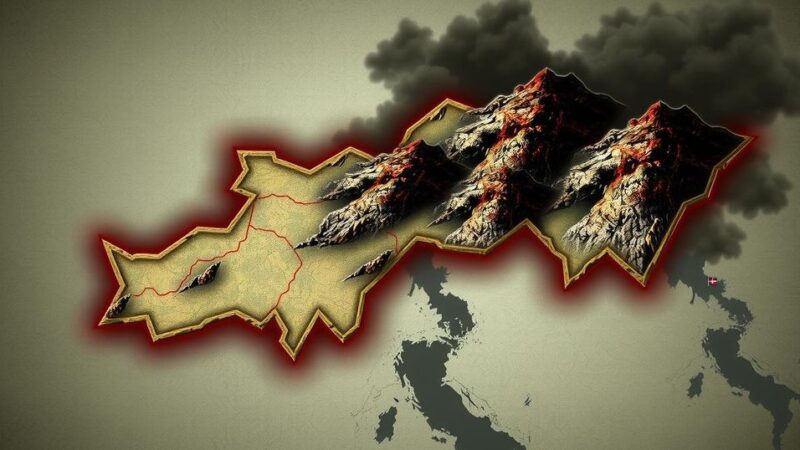The United States has executed airstrikes against Houthi forces in Yemen, employing B-2 stealth bombers for the first time in this conflict. This action is part of a broader military strategy aimed at deterring Iranian influence in the region, as tensions escalate amid ongoing humanitarian crises in Lebanon and stalled ceasefire negotiations related to the Israeli-Palestinian conflict.
The United States has conducted airstrikes against Houthi forces in Yemen, marking a significant escalation in the conflict as it represents the deployment of B-2 stealth bombers for the first time in this campaign. The strikes targeted five underground weapons storage facilities, signaling a direct response to the heightened tensions and ongoing Houthi attacks on international maritime vessels. US Defense Secretary Lloyd Austin indicated that the strikes were authorized by President Joe Biden to further diminish the Houthis’ capabilities after a protracted period of hostilities from the Iran-backed group. This military action coincides with escalating regional tensions, particularly concerning Iran and its alliances with groups such as Hamas and Hezbollah, as Israel prepares for anticipated retaliation related to recent missile attacks. In Lebanon, the humanitarian crisis continues to exacerbate, with UNICEF reporting that approximately 400,000 children are among the 1.2 million displaced due to the conflict involving Israel and Hezbollah. This rapidly deteriorating situation has raised alarms regarding the risk of cholera outbreaks in the region. In recent weeks, Israeli forces have been implicated in multiple attacks against UN peacekeepers, further complicating the security dynamics in southern Lebanon. Additionally, ceasefire negotiations regarding the Israeli-Palestinian conflict appear to have stalled, with no significant dialogue concerning hostage releases or ceasefire agreements for nearly a month. French leaders have also expressed their discontent regarding Israel’s actions in the region, particularly concerning arms sales and military engagement. French President Emmanuel Macron has called for a suspension of arms sales to Israel and has advocated for a Comprehensive ceasefire in both Gaza and Lebanon, a sentiment that has been met with criticism from Israeli officials, including Defense Minister Yoav Gallant, who condemned France’s recent decision to exclude Israeli firms from an upcoming naval exhibition in Paris.
The geopolitical landscape surrounding Yemen, Israel, and Iran has increasingly become a focal point of international concern. The Houthis, an Iran-backed militia based in Yemen, have been involved in repeated attacks that pose threats to maritime security in the Red Sea. Additionally, the conflict in Gaza has intensified since October 1, leading to a heightened military response from various actors in the region, including Iran’s alliances with groups such as Hamas and Hezbollah. During this time, the United States has sought to assert its military presence and deter further aggression from Iran and its proxies in the Middle East, using advanced military assets such as the B-2 stealth bomber to convey a clear message of commitment to its regional allies, notably Israel.
The recent US airstrikes against the Houthis in Yemen represent a significant and strategic military response amidst escalating regional tensions and humanitarian crises. As various actors engage in complex military and diplomatic maneuvers, the situation in Yemen, Israel, and Lebanon necessitates close monitoring and international engagement to alleviate humanitarian suffering and promote stability. The involvement of the US and other nations in these conflicts highlights the intricate web of alliances and hostilities that characterize the contemporary Middle East.
Original Source: www.cnn.com






